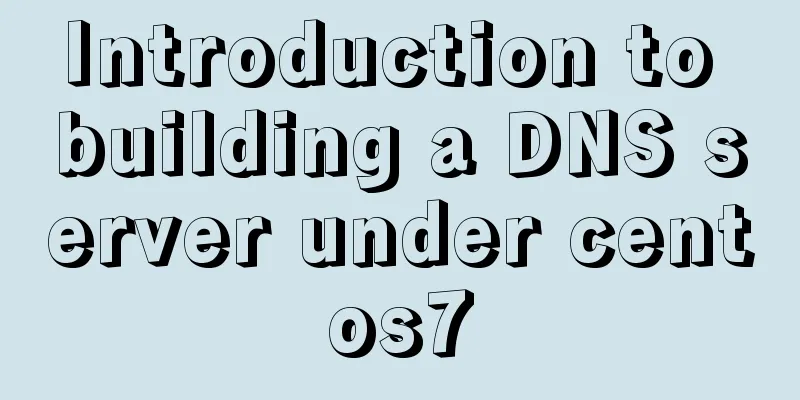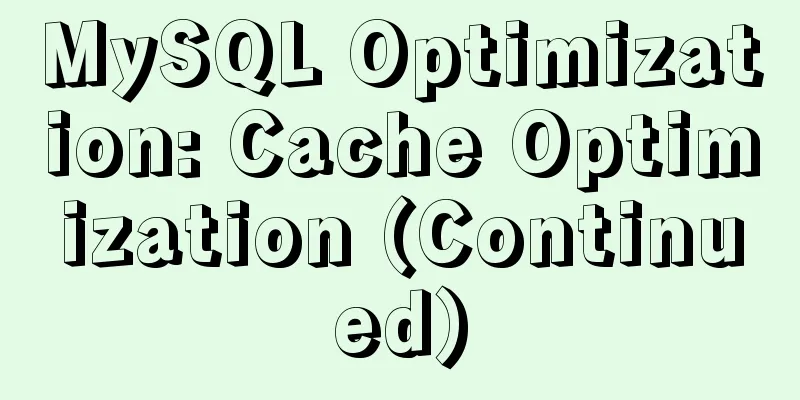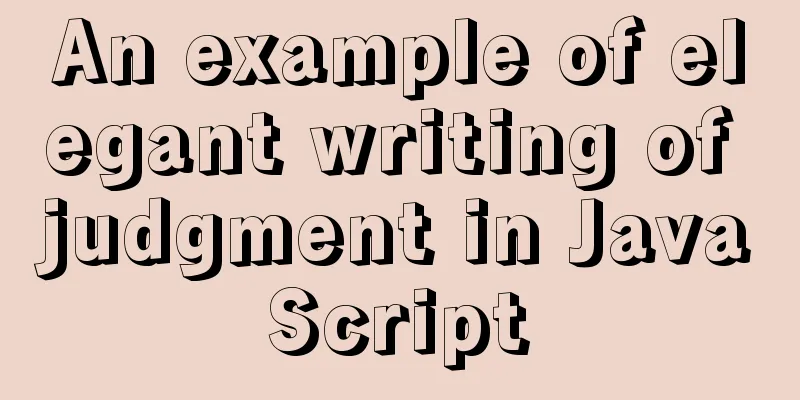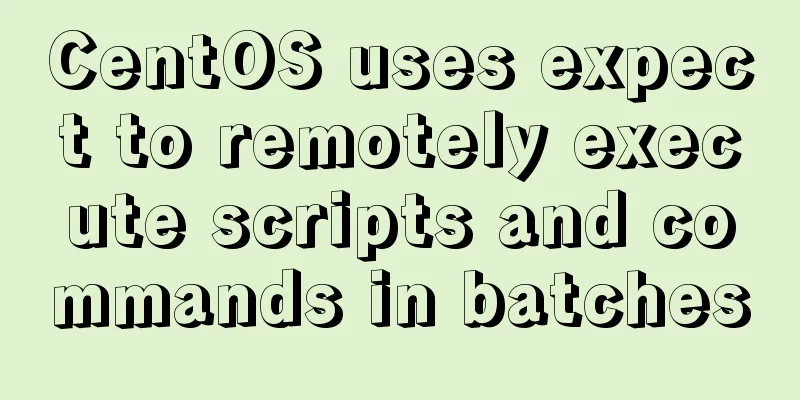Analysis of the principles of docker containers
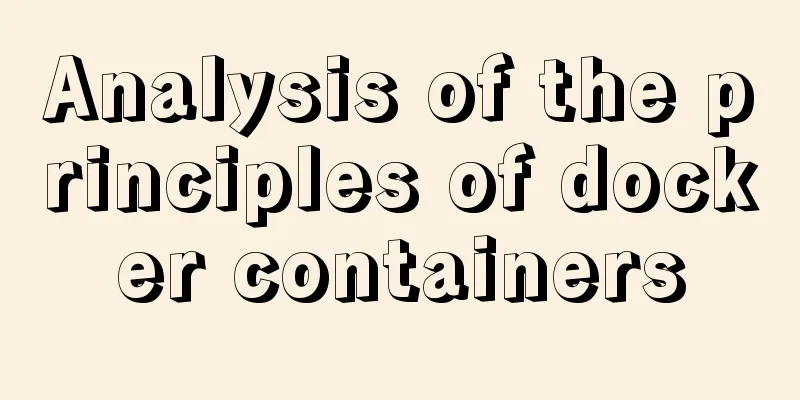
01 What is the essence of a container?Today's focus is to explain clearly what containers are. To understand the concept of containers, first we need to know what a process is? When we execute a program in the Linux operating system, this program may be a binary file. When it is called, it becomes a collection of data in the computer memory, values in registers, instructions in the stack, and various device status information. Such a combination of computer execution environments is called a process. A container provides a "boundary" for the process. In plain words, it "wraps" the process. In essence, it achieves this "wrapping" action by constraining and modifying some dynamic performance of the process. It is not difficult to see that a container is a special process with "boundaries". Now let's look at the process characteristics of a MySQL container. 1. First check the containerID value of the mysql container on our machine, as follows: [root@VM-16-13-centos service]# docker ps | grep mysql 4784586d01e0 mysql "docker-entrypoint..." 3 months ago Up 3 months k8s_mysql.16d54d16_mysql-pd7jr_default_0032bce0-2b0f-11eb-98ad-5254002dbd85_d775f414 As you can see, the value of containerID is 4784586d01e0 2. First, we enter a container through the docker exec command (the introduction of this command will be described below), and use the ps -ef command to view the process: [root@VM-16-13-centos service]# docker exec -it 4784586d01e0 bash root@mysql-pd7jr:/# ps -ef UID PID PPID C STIME TTY TIME CMD mysql 1 0 0 2020 ? 03:20:20 mysqld root 882 0 0 09:42 ? 00:00:00 bash root 888 882 0 09:46 ? 00:00:00 ps -ef It can be found that the process number of the mysqld process is 1. Here I want to say more: 1. This instruction tells the container that I want to enter this container and run a bash instruction. 2. If your docker does not support the ps command, you need to install the ps command using the following command: Then we exit the container and check the process ID of the mysqld process again: [root@VM-16-13-centos service]# ps -ef|grep mysql root 5152 5059 0 2020 pts/5 00:00:00 mysql -uroot -px xxxx root 13644 24879 0 2020 pts/4 00:00:00 mysql -uroot -px xxxx polkitd 18853 18837 0 2020 ? 03:20:25 mysqld The process number is found to be 18853. We can conclude that the results of the mysqld process being executed inside and outside the container are different. Why is this happening? The essence of this is that the processes in the docker container are isolated in a new environment, so that these processes can only see the recalculated PID number. As we said before, Docker essentially "packages" a process on a physical machine by constraining and modifying some of the dynamics of the process. The phenomenon we see is the result of "packaging". So how does Linux constrain and modify physical machine processes? Here we introduce new concepts: For most Linux containers such as Docker, Linux's Cgroups technology is the main means of creating constraints. 02 Introduction to Cgroup Technology and Namespace TechnologyNamespace technology is mainly used to provide resource isolation for containers. The method to implement the Namespace function is relatively simple. Usually, when we create a Linux process, the system will execute a clone command, similar to: int pid = clone(main_function, stack_size, SIGCHLD, NULL); It returns the PID number of the process we created. The Namespace technology adds an additional parameter when Linux creates a process. This new parameter is temporarily called newid. In this way, the PID number of the process we see in the container is this newid. We call this Namespace PID Namespace. In addition to this Namespace, there are others, such as mount Namespace and Network Namespace, which are used to isolate mount points and networks respectively. Of course, not all resources can be namespaced, for example, time and operating system kernel are shared by all containers on a server. Once the container starts running, we need to control the machine resources it uses, such as disk, memory, CPU, etc. Otherwise, it may exhaust the resources of the physical machine and cause some system processes to crash. Cgroup technology is specifically designed to limit resources for Linux processes. Its full name is Linux Control Group, which is stored in the /sys/fs/cgroups directory in the form of files and directories, as follows: [root@VM-16-13-centos service]# ls -l /sys/fs/cgroup/ total 0 drwxr-xr-x 4 root root 0 Nov 20 11:38 blkio lrwxrwxrwx 1 root root 11 Nov 20 11:38 cpu -> cpu,cpuacct lrwxrwxrwx 1 root root 11 Nov 20 11:38 cpuacct -> cpu,cpuacct drwxr-xr-x 5 root root 0 Nov 20 11:38 cpu,cpuacct drwxr-xr-x 3 root root 0 Nov 20 11:38 cpuset drwxr-xr-x 4 root root 0 Nov 20 11:38 devices drwxr-xr-x 3 root root 0 Nov 20 11:38 freezer drwxr-xr-x 3 root root 0 Nov 20 11:38 hugetlb drwxr-xr-x 5 root root 0 Nov 20 11:38 memory lrwxrwxrwx 1 root root 16 Nov 20 11:38 net_cls -> net_cls,net_prio drwxr-xr-x 3 root root 0 Nov 20 11:38 net_cls,net_prio lrwxrwxrwx 1 root root 16 Nov 20 11:38 net_prio -> net_cls,net_prio drwxr-xr-x 3 root root 0 Nov 20 11:38 perf_event drwxr-xr-x 4 root root 0 Nov 20 11:38 pids drwxr-xr-x 4 root root 0 Nov 20 11:38 systemd Different file directories store restricted values for different resource types. The most commonly used ones are: blkio: Set i/o limits for block devices, generally used for devices such as disks cpuset: assign separate CPU cores and corresponding memory nodes to processes memory: Sets a limit on memory usage for the process. When we start the container through the command, the operating system will fill in the PID corresponding to the docker process into the file of the corresponding control group, thereby controlling the CPU resource value used by the current process. 03 The relationship between containers, images, and repositoriesDocker includes three basic concepts:
These three parts make up the entire life cycle of Docker, as shown in the figure above. The Docker image contains a file system, similar to a virtual machine image, and is a read-only template. This file system is also commonly referred to as rootfs, and usually contains a series of directories such as bin, etc, sys, and usr. The Docker container is instantiated from the image, which is very similar to the object-oriented concept we learned. We can imagine the image as a class and the container as an object after the class is instantiated. This makes it very easy to understand the relationship between the image and the container. Docker repository: Similar to the code repository, it is the place where Docker stores image files centrally This relationship can be expressed more clearly as:
The above is a detailed explanation of the concept of docker containers. For more information about the concept of docker containers, please pay attention to other related articles on 123WORDPRESS.COM! You may also be interested in:
|
<<: Solve the problem of inconsistent MySQL storage time
>>: Three ways to parse QR codes using javascript
Recommend
How to split and merge multiple values in a single field in MySQL
Multiple values combined display Now we have th...
Detailed tutorial on installing mysql 8.0.20 on CentOS7.8
1. Install MySQL software Download and install My...
JavaScript Factory Pattern Explained
Table of contents Simple Factory Factory Method S...
js to realize a simple advertising window
This article shares the specific code of js to im...
15 important variables you must know about MySQL performance tuning (summary)
Preface: MYSQL should be the most popular WEB bac...
Vue implements setting multiple countdowns at the same time
This article example shares the specific code of ...
Research on the problem of flip navigation with tilted mouse
In this article, we will analyze the production of...
VMware15/16 Detailed steps to unlock VMware and install MacOS
VMware version: VMware-workstation-full-16 VMware...
How to import CSS styles into HTML external style sheets
The link-in style is to put all the styles in one...
MySQL statement to get all dates or months in a specified time period (without setting stored procedures or adding tables)
mysql gets all dates or months in a time period 1...
Solve the problem that the VMWare virtual machine centos time is inconsistent with the local time
The time of VM Ware virtual machine centos is inc...
Summary of the use of element's form elements
There are many form elements. Here is a brief sum...
Detailed explanation of the difference between url ending with / and without / in nginx proxy_pass configuration
When nginx configures proxy_pass, the difference ...
Element tree control integrates a drop-down menu with icons (tree+dropdown+input)
Table of contents Requirements: Implementation st...
Distinguishing between Linux hard links and soft links
In Linux, there are two types of file connections...




